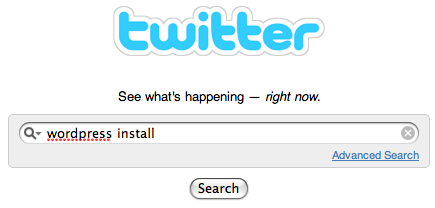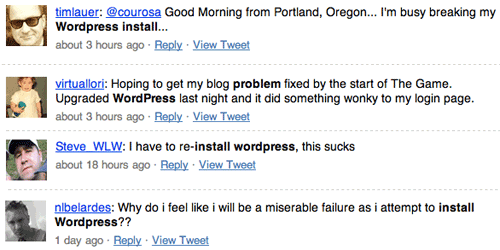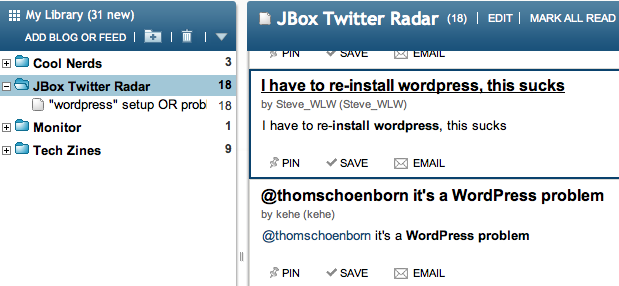Curious if anyone else has experienced this effect:
Twitter has almost completely supplanted my drive to make thoughtful, in-depth blog posts. Its low-friction, sound bite, instant gratification-ness style for interaction satisfies enough of what the lengthier public writing used to provide to where it’s now become the path of least resistance for meeting that need.
 Let me first say I’m not hating on Twitter. It definitely has value as a communication tool and can be used in various beneficial ways (I just wrote about last month). And I understand a device like Twitter can’t be blamed for behavior anymore than a handgun can be blamed for violence. But at least in my situation it has undeniably sapped mental cycles in the way that a mindless primetime TV show being on in the background can suck me in and shut my brain off. I’ve got a theory on the dynamics of what’s happening here but before we examine the heist, let’s rewind and look at what the blog used to satisfy.
Let me first say I’m not hating on Twitter. It definitely has value as a communication tool and can be used in various beneficial ways (I just wrote about last month). And I understand a device like Twitter can’t be blamed for behavior anymore than a handgun can be blamed for violence. But at least in my situation it has undeniably sapped mental cycles in the way that a mindless primetime TV show being on in the background can suck me in and shut my brain off. I’ve got a theory on the dynamics of what’s happening here but before we examine the heist, let’s rewind and look at what the blog used to satisfy.
Pre-Twitter
For me in the past keeping a blog has served as:
- a reference for remembering links, random thoughts and non-intuitive things I had figured out
- an outlet for airing out observations and wacky ideas and getting input from others
- a shaming instrument to call companies out on injustices or crappy customer service experiences
- a self-promo tool for our company
- a way to give anyone who wants to connect with me more “surface area” to work with
- an exercise in persuasive writing
- a personal space to encourage deep or thoughtful exchange on complex topics that I find interesting
Those are the main reasons I have written and continue to write posts (albeit now at an anemic pace).
Post-Twitter
So what has changed with the introduction of Twitter as a communication medium? Very simply, Twitter solves every one of those above except for the last two. And it does so with less friction. We naturally gravitate to the solutions that require the minimal amount of effort while adequately satisfying our needs. Whereas before keeping the blog was the path of least resistance, Twitter has become that. The only problem is that #6 & #7 aren’t a part of this new path. Or well okay, let me restate that: it’s really difficult to say anything compelling or thoughtful in a 140-char message.
But if it’s “really difficult,” that’s a good thing right? A challenge. A hard path. Constraints breed creativity!
Wrong. In an increasingly-ADHD environment of rapid volleys of thousands of disparate and abrupt communication snippets, I would say the real constraint challenge now is focus and attention, not message length. There’s an addictive, caffeine-like quality to Twitter too where once you’re out there, you feel compelled to stay abreast of this distributed conversation that’s occurring. You begin to feel obligated to keep up with people with whom you didn’t before. While you’re surface area is now quadrupled, your depth in connection is reduced to paper-thin.
So what
Well this is all fine and obvious Sean. What do you propose?
Acknowledging that #6 & #7 are missing (or at best diluted) seems like the first step. You can get lulled into a routine and not realize the mechanics of what’s causing the behavior. Becoming conscious of the deficiency lets you recognize the issue so you can actively hunt for the source of it and make a correction. Personally I’ve discovered I don’t respond well to “push” tactics (ie. telling myself “Sean, you should really write more on the blog”). What I do respond well to is the “pull” of a vacuum when there’s something missing.
I don’t foresee my Twitter account going away but I now recognize that it’s displaced #1-5 from this blog. The upside of this discovery is that hopefully the posts that do appear here will now be skewed towards #6 & #7. For #1-5 if you are so inclined, you can follow me on Twitter.
What do you think? Have you experienced this same effect and if so, how do you compensate?














